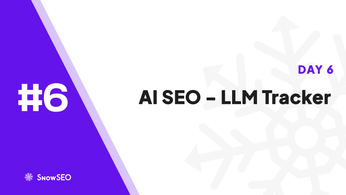
Top 7 Content Generation Best Practices Revealed
Table of Contents
Discover the must-know content strategies for 2025 that will transform your digital marketing success. Many content marketers struggle to keep up with the rapidly changing digital landscape. This article reveals seven best practices to enhance your content creation efforts. Insights from industry leaders and the latest market data.
The Importance of Adapting Content Strategies
In the rapidly evolving digital landscape of 2025, adapting content strategies is essential for maintaining relevance and engagement. As audience preferences shift and new technologies emerge, static content approaches risk obsolescence.
Understanding Market Dynamics
Market dynamics are influenced by factors such as technological advancements, cultural shifts, and economic changes. For instance, the rise of artificial intelligence has transformed content creation and distribution, necessitating agile strategies. A study on program adaptation by health departments highlights the importance of modifying interventions to meet specific population needs, enhancing effectiveness and reach. (pmc.ncbi.nlm.nih.gov)

Similarly, adapting content to cultural contexts is crucial. Research on culturally adapting interventions for Yup’ik Alaska Native communities demonstrates that tailoring content to cultural norms and values significantly improves engagement and outcomes. (pmc.ncbi.nlm.nih.gov)
In summary, understanding and responding to market dynamics through adaptable content strategies are vital for success in 2025.
Leveraging AI in Content Creation
Artificial Intelligence (AI) is revolutionizing content creation by automating tasks, enhancing creativity, and improving efficiency. AI-driven tools can generate text, images, and videos, enabling creators to produce high-quality content rapidly. For instance, generative AI systems like ChatGPT and Gemini can create diverse content forms, from articles to multimedia presentations. (gao.gov)
Despite its potential, AI adoption in content creation varies across industries. As of late 2023, only 3.8% of U.S. businesses reported using AI to produce goods and services, with the information sector leading at 13.8%. (census.gov) This indicates a significant opportunity for growth in AI integration within content creation.
Integrating AI into content creation offers several benefits:
- Efficiency: AI automates repetitive tasks, allowing creators to focus on strategic aspects.
- Creativity Enhancement: AI can suggest ideas and generate drafts, serving as a collaborative partner.
- Personalization: AI analyzes user data to tailor content, increasing engagement.
However, challenges such as ethical considerations, potential biases, and the need for human oversight remain. A study from Oregon State University found that AI can enhance creativity in student writing when supported by instructor guidance, highlighting the importance of human involvement. (news.oregonstate.edu)
Top AI Tools for Content Creators
Several AI tools are transforming content creation:
- Grammarly AI: Enhances writing by providing real-time grammar and style suggestions.
- Canva: Utilizes AI to assist in graphic design, offering templates and design elements.
- Hootsuite: Employs AI for social media management, optimizing posting schedules and content.
These tools exemplify how AI can streamline content creation processes, making them more efficient and effective.
Crafting personalized content at scale is essential for engaging diverse audiences effectively. By leveraging advanced techniques and tools, organizations can deliver tailored experiences that resonate with individual preferences.
Techniques for Personalization
To implement personalized content strategies, consider the following approaches:
- Data-Driven Insights: Utilize user behavior analytics to understand preferences and tailor content accordingly. For instance, integrating Graph Convolutional Networks with reinforcement learning can enhance recommendation systems by analyzing complex user-product interactions. (pmc.ncbi.nlm.nih.gov)
- Dynamic Content Adaptation: Adjust content in real-time based on user interactions. This method has been effective in digital health interventions, where personalized strategies improve user engagement and outcomes. (pmc.ncbi.nlm.nih.gov)
- User-Centric Design: Incorporate user feedback to refine content personalization. Studies indicate that aligning content with individual health priorities can lead to healthier choices among users. (pmc.ncbi.nlm.nih.gov)
- Automated Content Generation: Employ AI tools to create personalized content efficiently. This approach is particularly useful in managing large-scale content needs while maintaining relevance.
- Segmentation and Targeting: Divide the audience into segments based on demographics or behavior to deliver more relevant content. This strategy enhances engagement by addressing specific interests.
Implementing these techniques requires a combination of technological tools and strategic planning to ensure content remains relevant and engaging across diverse user bases.

Measuring Content Success
Effectively measuring content success is crucial for refining strategies and achieving desired outcomes. The Centers for Disease Control and Prevention (CDC) emphasizes the importance of systematic evaluation to enhance program effectiveness. (cdc.gov)
Key Metrics to Track
To assess content performance, consider the following metrics:
- Reach and Engagement: Monitor the number of views, shares, and comments to gauge audience interaction.
- Conversion Rates: Evaluate the percentage of users who complete desired actions, such as subscribing or purchasing.
- Retention Rates: Analyze how often users return to your content, indicating sustained interest.
- Quality of Information: Ensure content accuracy and reliability by adhering to established guidelines. (cdc.gov)
- User Feedback: Collect and analyze audience feedback to identify areas for improvement.
By systematically tracking these metrics, content creators can make informed decisions to enhance their strategies and better meet audience needs.
Utilizing Visual Content for Engagement
In the digital landscape of 2025, visual content has become a cornerstone for capturing audience attention and enhancing engagement. The Centers for Disease Control and Prevention (CDC) exemplifies this trend through their revamped website, which features improved content labeled by audience, less clutter, and a better user experience. This redesign underscores the importance of clear, accessible visual information in public communication. (cdc.gov)
Creating High-Impact Visuals
To maximize engagement, it’s essential to craft visuals that are not only aesthetically pleasing but also informative and relevant. The CDC’s Vision and Eye Health Surveillance System (VEHSS) provides comprehensive data on vision-related health, presented through interactive web applications. This approach allows users to visualize and understand complex health data effectively. (cdc.gov)
Incorporating such high-quality visuals can significantly enhance user experience, making information more digestible and engaging. By leveraging data visualization tools and interactive graphics, organizations can present complex information in a more accessible and compelling manner, thereby increasing audience engagement and comprehension.
Ready to elevate your content strategy? Implement these strategies today to stay ahead in content marketing with SnowSEO. Discover how our unified platform automates SEO, personalizes content, and optimizes for both search and AI. Start at snowseo.com.
Frequently Asked Questions
Q1: What are the key elements of effective content generation?
Effective content generation involves several critical components:
- Credible Design: Ensuring the content is well-structured and based on reliable sources.
- Accurate Data: Utilizing up-to-date and precise information to support claims.
- Sound Analysis: Interpreting data correctly to draw valid conclusions.
- Comprehensive Synthesis: Integrating various pieces of information to provide a holistic view.
These elements are essential for producing content that is both informative and trustworthy. (beta.cdc.gov)
Q2: How can I ensure my content is accessible to a diverse audience?
To make content accessible:
- Use Clear Language: Avoid jargon and write in plain language.
- Provide Multiple Formats: Offer content in text, audio, and visual formats.
- Ensure Readability: Use appropriate font sizes and contrast for readability.
- Include Alt Text: Provide descriptive text for images to assist visually impaired users.
These practices help in reaching a broader audience effectively. (stacks.cdc.gov)
Q3: What role does community engagement play in content creation?
Community engagement is vital as it ensures the content resonates with the target audience. By involving community members in the content creation process, you can identify relevant topics, address specific needs, and build trust. This collaborative approach leads to more impactful and accepted content. (cdc.gov)
Q4: How can I effectively disseminate my content to the intended audience?
Effective dissemination strategies include:
- Targeted Distribution: Identify and reach specific audience segments.
- Utilize Multiple Channels: Use various platforms like social media, email newsletters, and websites.
- Engage with the Community: Foster interactions through comments and discussions.
These methods enhance the reach and impact of your content. (cdc.gov)
Q5: What are the standards for developing evidence-based content?
Developing evidence-based content requires following established standards, such as:
- Guideline Scoping: Clearly define the content’s purpose and scope.
- Soliciting External Input: Engage experts and stakeholders for feedback.
- Summarizing Evidence: Compile and assess relevant research comprehensively.
- Crafting Recommendations: Provide clear, actionable guidance based on the evidence.
Adhering to these standards ensures the content’s validity and reliability. (cdc.gov)
Conclusion
Adapting your content strategies to align with 2025 trends, leveraging AI for efficient creation, and measuring success with the right metrics are essential for staying competitive. Research highlights that personalized content significantly boosts engagement, while AI tools streamline workflows for marketers worldwide. Implement these best practices today to maintain your edge, and explore the specific tools and strategies discussed to elevate your content generation process for lasting impact.





